A recent study examined bacteria present in oral cancer tumor samples to better understand the bacterial influence on the oral mircroenvironment

The oral cavity has a diverse microbiome with over 700 known species of bacteria that maintain a symbiotic relationship with the human host. However, microbial imbalances to the oral cavity from lifestyle factors (smoking, diet or poor oral hygiene) can lead to inflammatory responses that may influence cancer development. Oral cavity squamous cell carcinoma (SCC) often doesn’t present until the later stages, and has a poor prognosis. A better understanding of the oral microbiome could lead to improved SCC detection and treatment.
Cleveland Clinic is a non-profit academic medical center. Advertising on our site helps support our mission. We do not endorse non-Cleveland Clinic products or services. Policy
A recent study appearing in Neoplasia examined the role of oral bacteria in the context of the tumor immune microenvironment. The research team included investigators from the UT MD Anderson Cancer Center, University of Florida and Cleveland Clinic. Natalie Silver, MD (staff in Cleveland Clinic’s Head and Neck Institute and the Center of Immunotherapy and Precision Immuno-Oncology) co-led the study. The researchers looked at paired tumor and adjacent normal tissues from thirty-seven oral tongue squamous cell carcinoma (SCC) patients. The tissues were subjected to 16S rRNA gene sequencing, whole exome sequencing (WES), and RNA sequencing for tumor samples. Based on sequencing results, the authors looked closer at Fusobacterium in additional experiments. In some solid tumors, such as colorectal cancer, Fusobacterium has also been shown to create a pro-inflammatory microenvironment and shape the immune microenvironment to allow tumor propagation.
The study included 37 patients with diagnosed oral tongue SCC who underwent surgery with curative intent between January 2010 and June 2015. From these patients, 74 paired tumor and paired adjacent normal samples were procured. DNA and RNA was isolated, and 16s rRNA, WES and RNA sequencing was performed.
Based on the analysis from RNAseq data, the researchers examined the effect of periodontal bacteria on head and neck cancer cells. Bacterial strains were cultured and added to head and neck cancer cell lines in vitro. Total RNA from harvested cells was isolated, and the relative levels of RNA expression using polymerase chain reaction (PCR). Results were confirmed using flow cytometry.
Sixty-nine (33 tumor and 36 normal samples) were included in the final analysis. “One of the first steps we took was determining the taxonomic profile of the bacteria in both the normal and the tumor samples,” explains Dr. Silver. “We observed that Fusobacterium was significantly enriched in oral tongue cancer and that Rothia and Streptococcus were enriched in adjacent normal tissues. Additionally, we found 492 unique species in our sample, including Fusobacterium periodonticum and four subspecies of Fusobacterium nucleatum; ssp. vincentii, ssp. polymorphum, ssp. nucleatum, and ssp. animalis.”
Additionally, the authors found that alpha diversity (richness of the bacterial community) was significantly lower in tumor compared to adjacent normal tissue. PD-L1 expression was also associated with increased Fusobacterium abundance (p = 0.03) in the tumor samples. This finding was validated in vitro by demonstrating induction of mRNA expression and protein expression of PD-L1 on oral cancer cell lines after Fusobacterium nucleatum infection.
“Our study demonstrates that Fusobacterium is associated with increased PD-L1 expression in oral cancer tumor samples and Fusobacterium can increase PD-L1 expression on oral cancer cells in vitro,” states Dr. Silver.
Dr. Silver also notes that their results suggest that tumor cell upregulation of PD-L1 in response to oral pathobionts, such as Fusobacterium, could influence immune evasion by oral carcinomas, which would allow for tumor propagation. Additionally, altering PD-L1 expression may influence tumor response to therapy. The mechanism causing this interaction in oral cancer still remains unclear and requires further investigation. Nevertheless, oral cancer patients with premalignant lesions or patients with high risk of recurrence could benefit from therapeutic targets that are designed to block the effects of Fusobacterium.
Dr. Silver was awarded the Larry Goldberg VeloSano Pilot Award in honor of Carolyn Stanek, BSN, RN, Specialty Care Coordinator for her work.
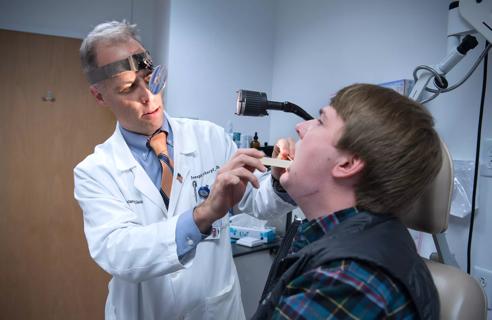
Strong communication with the patient and a thorough approach are essential
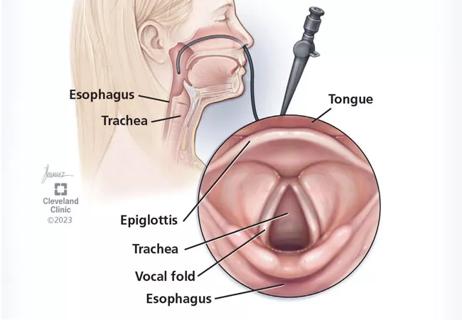
Cleveland Clinic physicians weigh in

New research adds to understanding of an understudied link
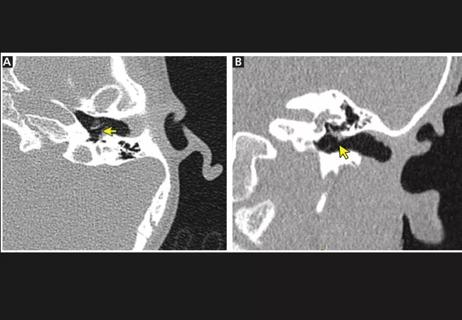
The rare condition can cause structural damage if untreated
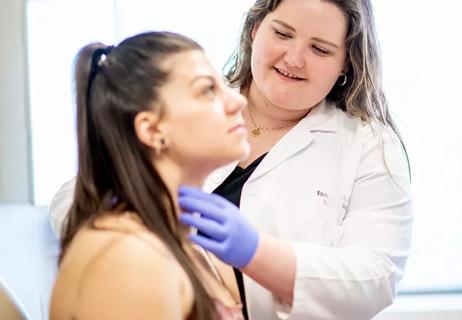
A recently published case series highlights the broad range of laryngeal findings that can present among individuals with EDS

Newly published research shows how the surgical technique is a game-changer for patients with ORN

First five-year prospective study provides valuable data to guide decision-making
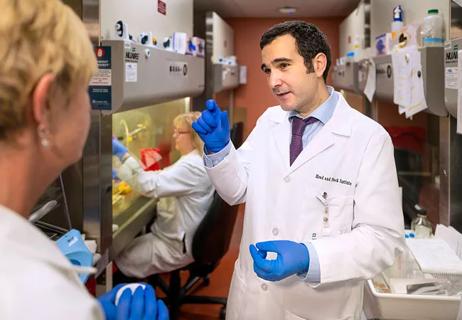
The Head & Neck Institute will make its initial footprint in the newly constructed BioRepository building